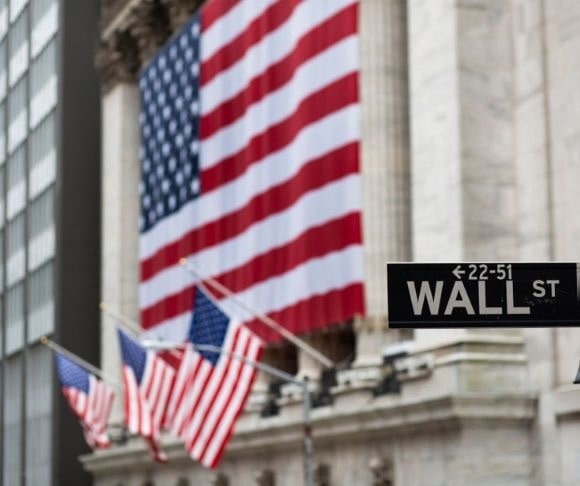Meme stocks can giveth and they can taketh away. From AMC to Bed Bath and Beyond, the companies pushed by Wall Street Bets and the Robinhood Men in Tights crowd enjoyed considerable gains this month, only to be obliterated once again. But are the stop-and-start rallies an endless cycle for memeified investments, or have the stock market zombies been buried six feet under once and for all?
The Rise and Fall of the Meme Stocks
Retailer Bed Bath and Beyond spiked more than 280% heading into the Aug. 18 trading session. After the closing bell, shares cratered 60% to below $11, and they are poised to sink even more. The Blood Bath and Beyond spike was put to rest after activist investor Ryan Cohen sold off his entire stake and scored a $68 million profit. Nice work if you can get it! Some believe that the company is on the cusp of bankruptcy. Considering the history of the market in the last couple of years (looking at you, Hertz), it is almost certain the stock will crater to $1 and then soar again.
[substack align=”right”]What about some of the other meme darlings of Wall Street? The same trends formed. AMC had been on a tear over the last month, climbing from around $14 to as much as $25 before plummeting again to under $18 a share. GameStop surged from $32 to just under $45 and then erased most of the gains. Barbecue maker Weber is the latest entrant in the meme parade, close to doubling its share price in a week. It then slumped about 8% to close out the raucous trading week.
Last year, it was understandable why stocks were being pumped and then dumped. Armchair traders were flush with cash from President Joe Biden’s wallet and leveraged to the moon amid near-zero interest rates. Today, it is perhaps one last effort to initiate a pump-and-dump scheme by both institutional investors and the social media cool kids. Companies are also doing their parts. For example, AMC is issuing APE dividends that helped boost the stock.
After a rough first half of 2022, this is a welcomed respite for mom-and-pop traders who saw their brokerage accounts drowning in red ink. But, unfortunately, there will be retail investors who will have tried to chase these rallies only to see their bets collapse. For many young people, it was understandable if they lost money during the 2021 meme mania, but hopefully, it served as a lesson to refrain from chasing gains and always dollar-cost average (DCA) down.
Europe is Doomed
Natural gas has been the top-performing asset in 2022, soaring 160% year-to-date. Indeed, the energy commodity has had its fair share of losses over the last six months. However, for the most part, it has been on an upward trajectory for the so-called bridge fuel. But here is the thing: Investors, households, businesses, and politicians might need to brace themselves for even higher prices this winter.
Natural gas prices settled the trading week firmly above $9 per million British thermal units (Btu) on the New York Mercantile Exchange. The September contract posted a 6% weekly gain after investors turned ultra-bullish on solid fundamentals and developments.
Russia is planning to halt natural gas flows to Europe again for pipeline maintenance. Moscow will institute a three-day maintenance shutdown on the Nord Stream pipeline that will exacerbate gas cuts and inevitably send the eurozone into a recession. This will force Europe to expand its imports from other markets, especially the US, which already ships much of its exports to the continent.
But the narrative prevalent throughout the energy markets is that Europe is doomed this winter. Prices could touch as much as $13 per million Btu on surging demand, lackluster output, and abysmal inventory levels. US natural gas production is already down nearly two billion cubic feet per day, with output totaling about 92 billion cubic feet a day.
That said, as Europe attempts to scoop up more natural gas, there will be intensifying competition with Asia. Several regional markets, including China and Japan, are warning about a power grid under intense strain and power outages similar to last year. So what could these states do? Why, run into the arms of the Russian bear who will provide them with enough energy to keep the lights on – at a price, of course.
Young Americans ‘Quiet Quitting’
Liberty Nation recently reported that American productivity had collapsed this year, despite a strong labor market and companies paying higher wages. While there are multiple reasons for falling labor output in today’s confusing economy, there might be a trend forming in the workplace: “Quiet Quitting.”
According to The Wall Street Journal, young professionals are flatlining at the office, refraining from going above and beyond their careers. Instead, these workers are unenthusiastic, doing the very basics, and arriving last and leaving first. The proof is in the latest Gallup polling. Employee engagement has been steadily falling in recent decades, but Generation Z and young millennials posted the lowest engagement rates at 31% in the first quarter.
 So, how is quiet quitting defined anyway? It varies. The newspaper came across multiple behaviors: not feeling a purpose at work, doing the bare minimum in their job description, refusing to ask for additional assignments, relaxing on social media during downtime, and not socializing with colleagues after work.
So, how is quiet quitting defined anyway? It varies. The newspaper came across multiple behaviors: not feeling a purpose at work, doing the bare minimum in their job description, refusing to ask for additional assignments, relaxing on social media during downtime, and not socializing with colleagues after work.
It is easy to notch this up to modern-day sloth and ignorance. But the reality of today’s economy is that real wage growth is -4%, the cost of living is soaring, the typical young person is up to his or her eyeballs in debt, and “adulting” has become an anomaly for millions of millennials and Gen Zers.
Mike Shedlock of MishTalk.com pointed out that it makes sense: “Yet, in many ways it seems all so understandable. The average person making the average wage cannot afford the average house. Marriage, kids, houses, who can afford them? Is it strange then that priorities have shifted from getting ahead to free time?”
But while this might be considered a TikTok-fueled craze, it does pose long-term economic harm if more people engage in this behavior. Today’s gross domestic product (GDP) depends heavily on productivity, especially when population growth has been subpar. If everyone is spending 9 a.m. to 5 p.m. doing the bare minimum, tweeting their outrage about someone using the wrong pronoun, and shopping on Amazon, the work will not get done, the economy will slow down, and China will become the world’s superpower.





